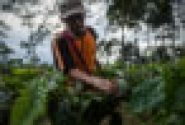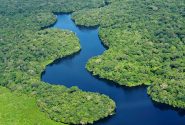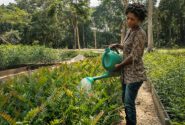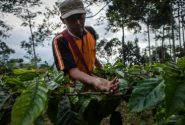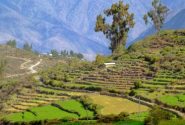
Degraded areas of land are hard to define and accurately account for their carbon stocks. s gendera.
DOHA, Qatar (30 November, 2012)_Though degraded forest cover is increasing in many regions, difficulties in defining these areas of land and accurately measuring their carbon stocks has seen degradation left by the wayside in the global debate about Reducing Emissions from Deforestation and forest Degradation (REDD+), says a recent study.
The findings come during the U.N. climate change summit in Doha in December where negotiators from 194 countries are meeting to discuss how to protect the world’s forests under REDD+ schemes.
Called “idle land” in some countries and “wastelands” in others (there are more than 50 definitions out there), degraded lands are often dynamic agricultural landscapes, containing trees and shrubs in various stages of re-growth.
That we have the technical ability to measure carbon stocks in some landscapes but not others has direct implications for what kinds of forest management can be included in REDD+.
It’s essential, says Ole Mertz, from the University of Copenhagen and lead author of the paper, that these lands be recognised within the REDD+ scheme as degraded, noting they are increasing in size and number in many regions.
The United Nations Framework Convention on Climate Change, or UNFCCC, agrees, he notes. But several other organisations, even within the global body, have yet to include temporary deforestation followed by regrowth in areas defined as “degraded”.
“The UNFCCC definition is more accommodating than those promoted by other organisations,” he said.
As part of efforts to slow climate change, governments, private organisations and scientists are trying to find ways to reduce greenhouse gas emissions from deforestation and forest degradation, the biggest offender globally behind industry and the burning of fossil fuels for energy.
The basic idea behind the UN-backed scheme, Reducing Emissions from Deforestation and forest Degradation (REDD+) is to reward heavily forested nations for not cutting down trees.
Defining “degradation,” has turned out to be more difficult than many had imagined, in part because it depends on perspective: One person may be looking at carbon stock levels, another at biodiversity or even the loss of forest-based products, said Mertz.
But a much more fundamental problem in degraded land research is the inability to measure, report and verify (MRV) carbon stocks, which are in shifting stages of cultivation.
The next step will be finding way to improve monitoring of carbon stocks in these landscapes, Mertz said, calling for the development of more allometric equations for fallow regrowth and greater assessment in carbon stocks of degrading forests.
“More knowledge on carbon stocks in forests under various degrees of degradation is essential,” he said.
“That we have the technical ability to measure carbon stocks in some landscapes but not others has direct implications for what kinds of forest management can be included in REDD+,” he said.
A large forest concessionaire stopping deforestation would qualify for inclusion in combating degradation, for example, but individual cultivators changing their practices to increase forest carbon stocks would be left out.
Recently developed approaches that integrate ground data with remotely sensed data (for example, satellite images) must be tested to monitor carbon stocks associated with different land-use and land-degradation categories, said Louis Verchot, scientist with the Center for International Forestry Research (CIFOR).
Those that include root biomass will yield more complete carbon stock estimates.
However there are some concerns that the ongoing challenges in measuring large-scale changes in forest carbon stocks may make REDD+ open to fraud and controversy.
One solution, Mertz said, may be to reward those who adhere to sustainable land use management that prevents further degradation, rather than offer performance-based rewards linked to carbon measurement or compensation for lost opportunity costs.
“Degraded forests are degraded because they are actively used,” he said, “and the most effective way of compensating users may be rewards for those who practice good forest management.”
We want you to share Forests News content, which is licensed under Creative Commons Attribution-NonCommercial-ShareAlike 4.0 International (CC BY-NC-SA 4.0). This means you are free to redistribute our material for non-commercial purposes. All we ask is that you give Forests News appropriate credit and link to the original Forests News content, indicate if changes were made, and distribute your contributions under the same Creative Commons license. You must notify Forests News if you repost, reprint or reuse our materials by contacting forestsnews@cifor-icraf.org.

